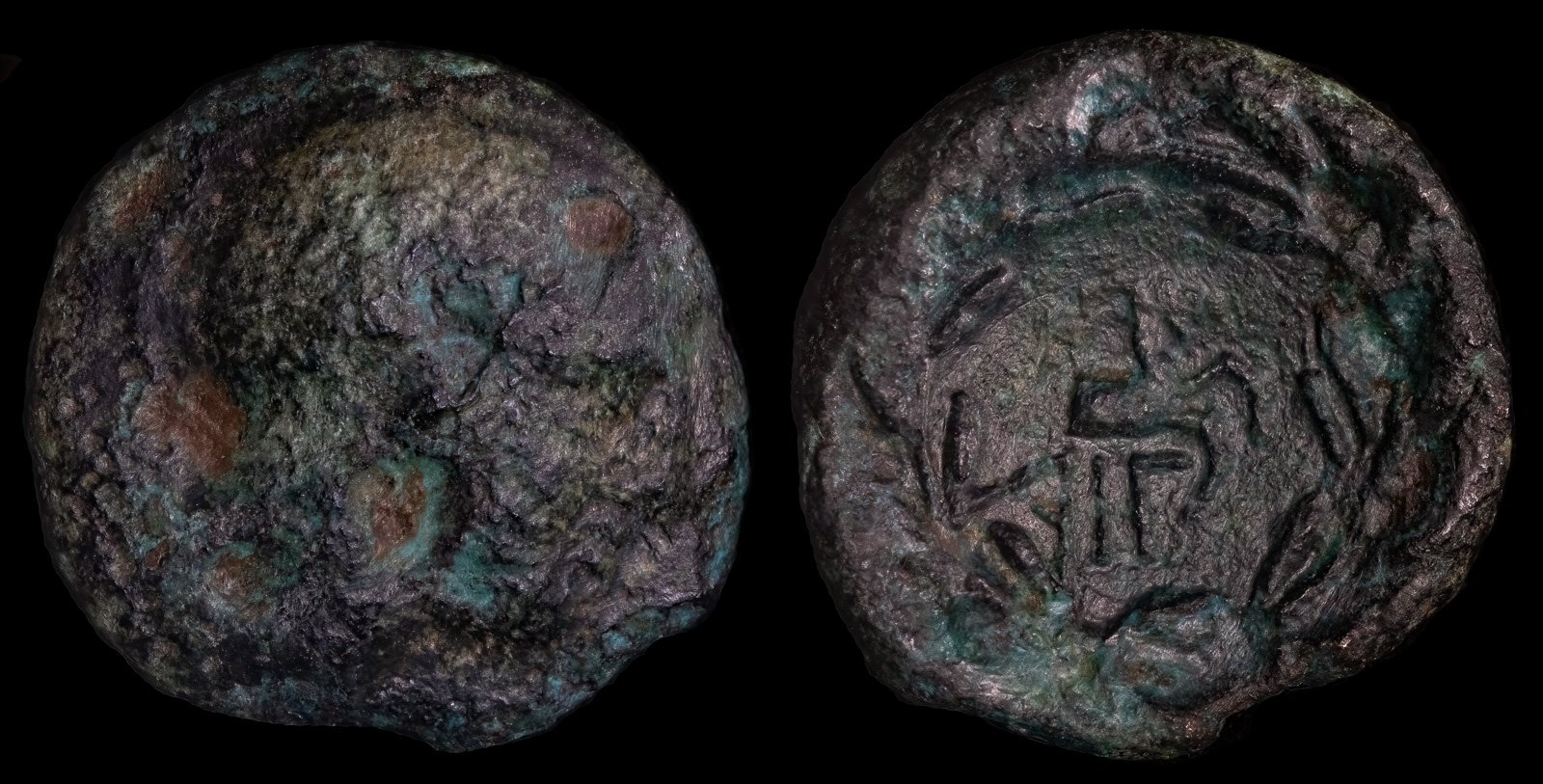
Achaia. Aegira
369-330 BCE
Æ Chalkous 12.77mm 1.13g
Obverse: Helmeted head of Athena right
Reverse: AIΓI, forepart of goat right, all within laureal wreath
BCD Peloponnesos 393
Ex BCD Collection
Ex Marc Breitsprecher
Aegeira was originally called Hyperisia and was mentioned by Homer in his Catalog. So, how did the name change to Aegeiria? Well, thanks to Pausanias, we know.
The present name was given to [Aigeira] by the Ionian settlers for the following reason. A hostile band of Sicyonians was going to invade their land. And they, not thinking themselves a match for the Sicyonians, collected together all the goats [aiges] in the country, and fastened torches to their horns, and directly night came on lit these torches. And the Sicyonians, who thought that the allies of the Hyperesians were coming up, and that this light was the campfires of the allied force, went home again: and the Hyperesians changed the name of their city because of these goats, and at the place where the goat that was most handsome and the leader of the rest had crouched down there they built a temple to Artemis the Huntress, thinking that this stratagem against the Sicyonians would not have occurred to them but for Artemis.
— Pausanias, Description of Greece 7.26, trans. Richard Shilletto (1886)
Strabo mentions a sanctuary of Zeus there with a statue of Athene in ivory. There was also a shrine to Artemis with a virgin priestess who would serve there until married. I’m not sure if the work there encouraged her to get married earlier.
Strabo, who evidently visited the city, also mentions a statue reputed to be of Agamemnon’s daughter Iphigenia, but of particular interest for this coin is the temple for Apollo, since that’s who is depicted on this coin. The temple is mentioned as extremely ancient, though remember that Strabo was writing roughly three or four hundred years after this coin was minted, so it seems likely that the temple was active then. Per Strabo, the temple contained an ancient wooden idol that was so old no one knew who made it. Strabo surmises that it was made by the same person who created the Herakles at Sikyon.
Later on, it appears this same story was confused at Aigai, also named after goats. The Alexander Romance attributes nearly the same story to Alexander the Great, though that is almost certainly false (though that’s not to say the story at Aegeira was true itself). Coins of Aegeira are relatively rare. The center of the reverse contains a goat, per its name.

Aigeira, Achaia
ca 360-330 BCE
Ae Chalkous 14mm, 1.5g
Obv: Helmeted head of Athena right
Rev: Head and neck of goat right, AIGI below, all within laurel wreath
BCD Peloponnesos 394
The tyrant Iseas of Aegira is overthrown by Aratus of Sikyon, a key leader of the Achaean League, who frees the city from local tyranny.
197 BCE